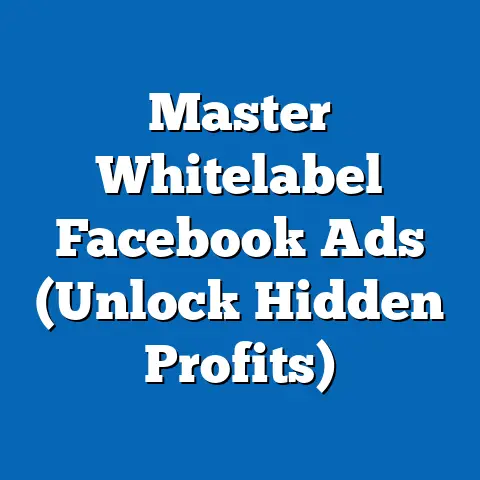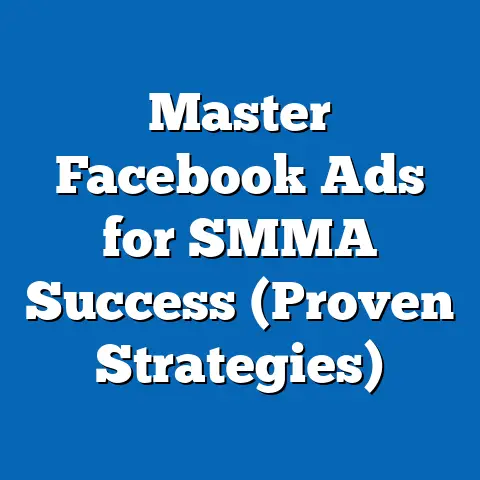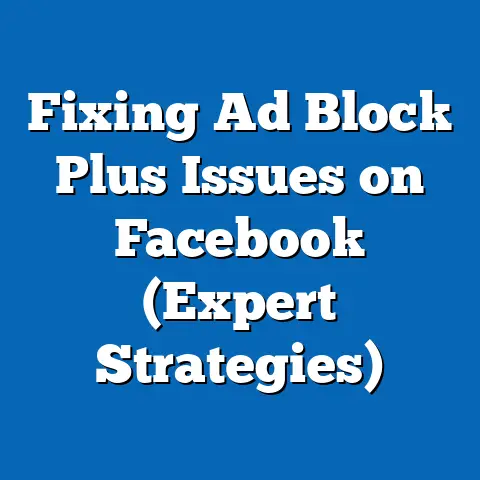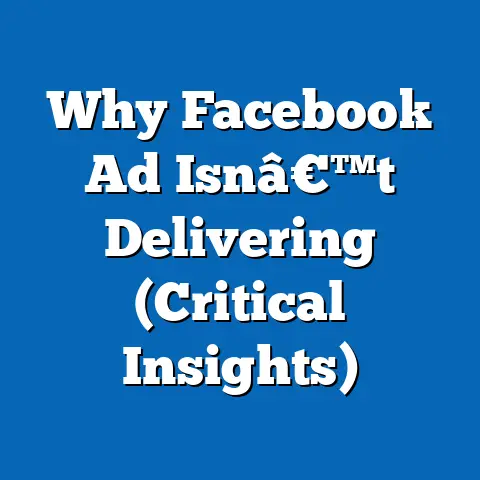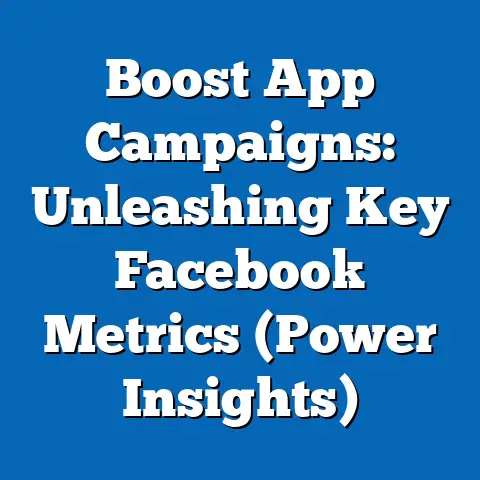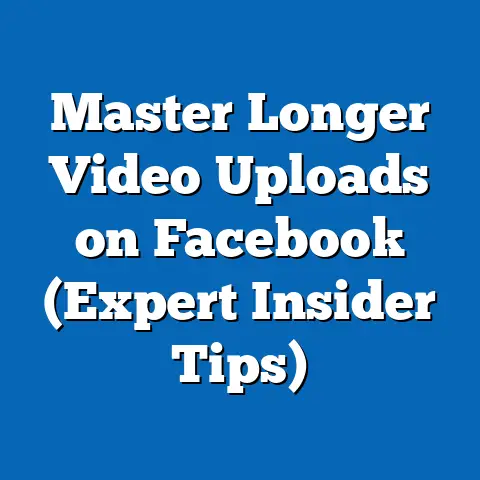Facebook Ad Strategies: Auction vs. Reach (Ultimate Breakdown)
Have you ever poured your heart and soul into crafting the perfect Facebook ad, only to watch it vanish into the abyss of the newsfeed, unseen and unappreciated? I remember working with a local bakery, “Sweet Surrender,” who spent weeks perfecting their ad for a new line of artisanal sourdough. They had stunning photos, compelling copy, and precise targeting. Yet, their ad barely registered a blip. It was disheartening to watch their hard work go unnoticed, like a beautiful song played to an empty room.
Understanding Facebook Ads
Facebook Ads have become an indispensable tool for businesses in today’s digital marketing landscape. With billions of active users, Facebook offers unparalleled reach and targeting capabilities. This platform allows you to laser-focus your advertising efforts, connecting with specific audiences based on demographics (age, location, gender), interests (hobbies, passions, brands they follow), and behaviors (purchase history, online activity).
But simply having access to this powerful platform isn’t enough. You need a strategy. And that strategy starts with understanding the different approaches Facebook offers to deliver your ads. Choosing the right ad strategy is paramount because it directly impacts who sees your ad, how often they see it, and ultimately, whether you achieve your desired outcome.
What is the Auction Strategy?
The Auction strategy is the heart and soul of Facebook’s advertising ecosystem. It’s a dynamic, competitive environment where advertisers bid for the attention of Facebook users. Think of it as a virtual marketplace where your ad is vying for a spot in someone’s newsfeed alongside countless other ads.
So, how does this auction actually work? Facebook’s algorithm determines which ads are displayed to users based on a complex interplay of factors:
- Your Bid: This is the maximum amount you’re willing to pay each time someone sees your ad (CPM), clicks on it (CPC), or takes a specific action (CPA).
- Relevance: Facebook assesses how relevant your ad is to the target audience. This is based on factors like the quality of your ad copy, the visual appeal, and how well it aligns with the user’s interests and past behaviors.
- Estimated Action Rates: Facebook predicts how likely users are to take the action you want them to take (e.g., clicking a link, making a purchase). This prediction is based on historical data and the performance of similar ads.
The algorithm then combines these factors to determine a “total value” for each ad, and the ads with the highest values are the ones that get shown.
Factors Influencing the Auction Process:
- Competition: The more advertisers targeting the same audience, the higher the competition, and the more you may need to bid to win.
- Audience Targeting: Highly specific and well-defined audiences tend to be more expensive to reach than broader audiences.
- Ad Quality: High-quality ads with compelling visuals and relevant messaging are rewarded with lower costs and better placement.
When the Auction Strategy Excels:
The Auction strategy shines when you have clearly defined objectives, such as:
- Driving Conversions: If your goal is to get people to make a purchase, sign up for a newsletter, or fill out a form, the Auction strategy is your go-to.
- Generating Leads: For businesses seeking to capture potential customer information, the Auction strategy allows you to optimize for lead generation.
- App Installs: If you’re trying to get more people to download your app, the Auction strategy can help you target users who are most likely to install.
Optimizing Your Bids and Targeting:
To succeed with the Auction strategy, you need to be strategic about your bids and targeting. Here are a few tips:
- Start with Automatic Bidding: Let Facebook’s algorithm optimize your bids for you initially. This gives you a baseline to work from.
- Refine Your Targeting: Continuously analyze your audience data and refine your targeting to reach the most responsive users.
- A/B Test Your Ads: Experiment with different ad copy, visuals, and calls to action to see what resonates best with your audience.
- Monitor Your Performance: Keep a close eye on your key metrics (e.g., cost per conversion, click-through rate) and adjust your bids and targeting accordingly.
Key Takeaway: The Auction strategy is a powerful tool for achieving specific business objectives, but it requires careful planning, continuous optimization, and a deep understanding of your target audience.
What is the Reach Strategy?
In contrast to the Auction strategy, the Reach strategy focuses on maximizing the number of unique users who see your ad. The primary goal is to get your message in front of as many people as possible within your target audience, regardless of whether they take a specific action.
Reach is particularly beneficial for:
- Brand Awareness Campaigns: When you’re introducing a new brand or product to the market, the Reach strategy can help you build awareness and recognition.
- Promoting Events: If you’re hosting an event, the Reach strategy can help you get the word out to a large audience and drive attendance.
- Reaching a Broad Audience: When you have a message that’s relevant to a wide range of people, the Reach strategy can help you reach them efficiently.
Mechanics Behind the Reach Strategy:
Unlike the Auction strategy, the Reach strategy doesn’t prioritize clicks or conversions. Instead, it focuses on delivering your ad to as many unique users as possible within your budget. Facebook’s algorithm optimizes for reach by showing your ad to different users over time, minimizing overlap and ensuring that you’re reaching a diverse audience.
When to Use the Reach Strategy:
The Reach strategy is most effective when:
- You Need to Reach a Large Audience Quickly: If you have a limited time frame to get your message out, the Reach strategy can help you achieve maximum exposure.
- You Want to Build Brand Recognition: By getting your brand in front of as many people as possible, the Reach strategy can help you increase brand awareness and familiarity.
- You’re Launching a New Product: The Reach strategy can help you generate buzz and excitement around your new product launch.
- You are Promoting a Time Sensitive Event: In such scenario, all you care about is how many people see the ad, and the reach strategy is suitable for that.
Measuring Success with the Reach Strategy:
When using the Reach strategy, your key metrics will be different than with the Auction strategy. Instead of focusing on conversions or leads, you’ll want to track:
- Reach: The number of unique users who saw your ad.
- Frequency: The average number of times each user saw your ad.
- Impressions: The total number of times your ad was displayed.
- Cost per Thousand Impressions (CPM): The cost of showing your ad to 1,000 people.
Key Takeaway: The Reach strategy is a powerful tool for building brand awareness and reaching a large audience quickly. However, it’s important to remember that it’s not designed to drive immediate conversions or leads.
Key Differences Between Auction and Reach Strategies
To help you make an informed decision, let’s break down the fundamental differences between the Auction and Reach strategies in a clear and concise way:
| Feature | Auction Strategy | Reach Strategy |
|---|---|---|
| Primary Goal | Drive specific actions (conversions, leads, app installs) | Maximize the number of unique users who see the ad |
| Optimization | Optimizes for actions | Optimizes for reach and frequency |
| Bidding | Bids are based on the value of each action | Bids are based on CPM (cost per thousand impressions) |
| Targeting | Highly targeted audiences | Broader audiences |
| Cost-Effectiveness | Can be more cost-effective for driving specific results | More cost-effective for reaching a large audience |
| Campaign Objectives | Ideal for campaigns with clear ROI goals | Ideal for brand awareness and event promotion campaigns |
| Audience Engagement | Focuses on engaging users who are most likely to take action | Focuses on getting the message in front of as many people as possible |
| Feature | Auction Strategy | Reach Strategy |
|---|---|---|
| Primary Goal | Drive specific actions (conversions, leads, app installs) | Maximize the number of unique users who see the ad |
| Optimization | Optimizes for actions | Optimizes for reach and frequency |
| Bidding | Bids are based on the value of each action | Bids are based on CPM (cost per thousand impressions) |
| Targeting | Highly targeted audiences | Broader audiences |
| Cost-Effectiveness | Can be more cost-effective for driving specific results | More cost-effective for reaching a large audience |
| Campaign Objectives | Ideal for campaigns with clear ROI goals | Ideal for brand awareness and event promotion campaigns |
| Audience Engagement | Focuses on engaging users who are most likely to take action | Focuses on getting the message in front of as many people as possible |
Advantages and Limitations:
- Auction Strategy:
- Advantages: Higher ROI, more targeted audience, better engagement.
- Limitations: Can be more expensive, requires careful optimization, may not reach a large audience.
- Reach Strategy:
- Advantages: Reaches a large audience quickly, cost-effective for building brand awareness.
- Limitations: Lower ROI, less targeted audience, may not drive immediate results.
- Advantages: Higher ROI, more targeted audience, better engagement.
- Limitations: Can be more expensive, requires careful optimization, may not reach a large audience.
- Advantages: Reaches a large audience quickly, cost-effective for building brand awareness.
- Limitations: Lower ROI, less targeted audience, may not drive immediate results.
Key Takeaway: Choosing between the Auction and Reach strategies depends entirely on your specific goals and objectives. If you’re looking to drive specific actions and generate a high ROI, the Auction strategy is the way to go. If you’re looking to build brand awareness and reach a large audience quickly, the Reach strategy is the better choice.
Real-World Case Studies
To illustrate the practical application of these strategies, let’s examine a couple of real-world examples:
Case Study 1: E-Commerce Store Using the Auction Strategy
An online clothing retailer wanted to increase sales of their new summer collection. They implemented an Auction strategy campaign, targeting users who had previously visited their website and shown interest in similar products. They optimized their bids for conversions, focusing on users who were most likely to make a purchase.
Results:
- Sales of the summer collection increased by 40%.
- Cost per conversion decreased by 25%.
- Website traffic from Facebook Ads increased by 30%.
Key Lesson: By focusing on conversions and targeting a highly relevant audience, the e-commerce store was able to generate a significant return on their investment.
Case Study 2: Local Restaurant Using the Reach Strategy
A local restaurant wanted to promote their grand opening and build awareness in the community. They implemented a Reach strategy campaign, targeting all Facebook users within a 10-mile radius of the restaurant. They focused on getting their message in front of as many people as possible, emphasizing the grand opening date and special promotions.
Results:
- Reach increased by 50% compared to previous campaigns.
- Website traffic from Facebook Ads increased by 20%.
- The restaurant saw a significant increase in foot traffic during the grand opening week.
Key Lesson: By focusing on reach and targeting a broad audience, the restaurant was able to generate significant buzz and drive attendance to their grand opening.
Key Takeaway: These case studies demonstrate the power of choosing the right strategy for your specific goals. By aligning your strategy with your objectives, you can maximize your results and achieve your desired outcomes.
Conclusion
Remember Sweet Surrender, the bakery I mentioned at the beginning? After struggling with low engagement, they shifted their focus from simply creating beautiful ads to understanding the nuances of Facebook’s advertising strategies. They started experimenting with the Auction strategy, carefully targeting users who had shown interest in baking or local businesses. They A/B tested different ad copy and visuals, constantly refining their approach.
The results were transformative. Their ads started appearing in front of the right people—those who were genuinely interested in their products. Their engagement soared, website traffic increased, and sales went through the roof. Sweet Surrender went from a frustrating experience to a resounding success story.
Just like Sweet Surrender, you too can transform your Facebook advertising efforts by understanding the difference between the Auction and Reach strategies. Take the time to reflect on your own advertising goals and consider how the right strategy can help you connect with your audience more effectively. Don’t let your hard work go unnoticed. Delve deeper into your Facebook advertising strategy and take the next steps toward achieving your business objectives. The power to connect with your audience and achieve your goals is within your reach. Now, go out there and make it happen!

